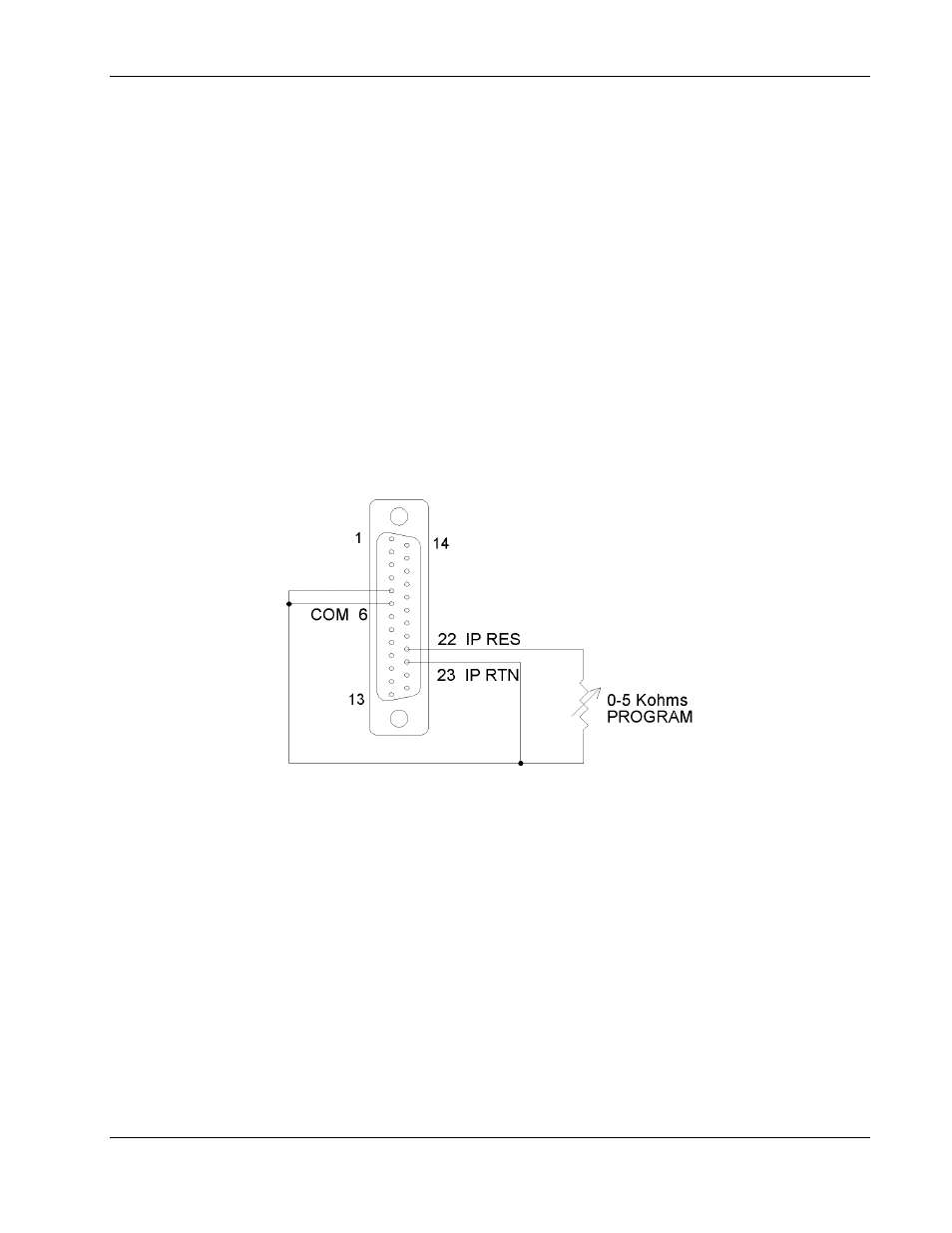Remote current programming, Emote, Urrent – AMETEK SFA Series User Manual
Page 45: Rogramming

Sorensen SFA Series
Operation
3.3
REMOTE CURRENT PROGRAMMING
Remote current programming is used for applications that require the output
current be programmed (controlled) from a remote source. An external
resistance or external voltage source may be used as a programming device.
When using remote current programming, a shielded, twisted-pair, hookup wire
is recommended to prevent noise interference with programming signals.
1. Remote Current Programming Using Resistance:
The resistance coefficient for remote current programming is 5k
ohms/100% rated output with respect to terminal J1-23 (IP RTN). The
programming current from terminal J1-22 (IP RES) is factory set for 1
milliampere. This yields a coefficient of 1.0% of rated output current for
each 50 ohms. If multiple switches or relays are used to program
different levels, make-before-break contacts are recommended. Note
that if an external resistance is used for remote programming, the
current programming return (IP RTN), terminal J1-23, must be
connected directly to or within ±3 volts (see note) of the power supply
common terminal, J1-24. See Figure 3–5 for connection requirements.
Figure 3–5. Remote Current Programming Using Resistance
2. Remote Current Programming Using a 0-5 VDC or 0-10 VDC Voltage
Source:
A DC voltage source for remote current programming is connected
between J1-10 (IP 5V) or J1-16 (IP 10V) and the return terminal J1-23
(IP RTN). Note that the return terminal J1-23 (IP RTN) must be
referenced directly to or within ±3V (see note) of the power supply
common, J1-24. The voltage coefficient for 5V remote current
programming is 50 millivolts = 1% of rated output, i.e., for a 300 amp
model, each 50 millivolts of programming voltage equals 3 amps of
output current. The voltage coefficient for 10V remote current
programming is 100 millivolts = 1% of rated output, i.e., for a 300 amp
M550292-01 Rev G
3-11
